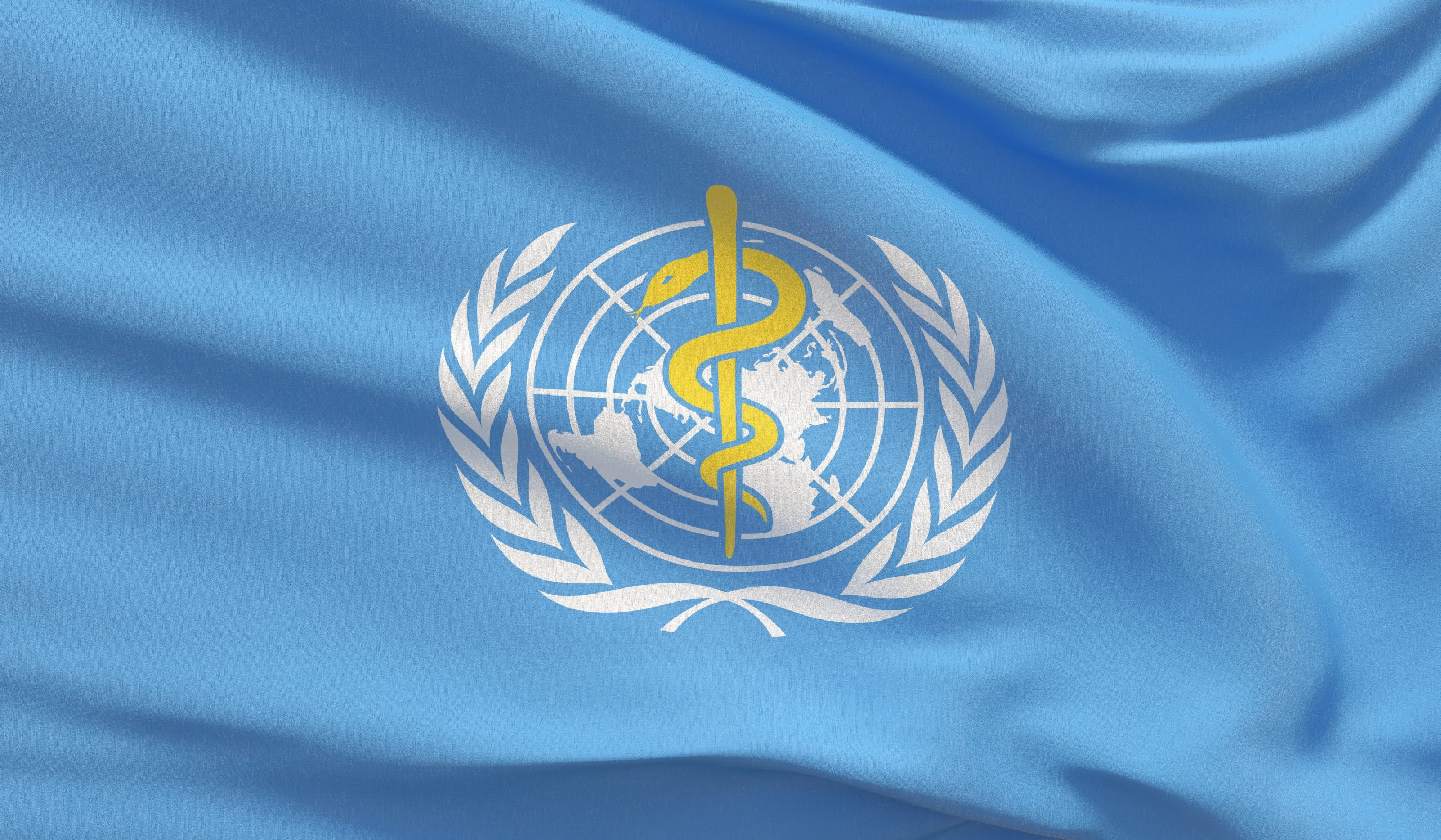If you’re considering Jase, chances are you’ve paused and thought, “This makes sense, but I still have a few questions.”You’re not alone. Here are the most common ones we hear, answered plainly. Is this really doctor-prescribed? Yes. Every Jase order is reviewed by a...
Monkeypox is Now a Global Health Emergency

On July 24th, 2022 Dr Tedros, Director-General of the World Health Organization declared Monkeypox a global health emergency. This declaration was escalated from a public health concern from last month’s meeting after the Monkeypox International Health Regulations (2005) (IHR) Emergency Committee failed to reach a consensus.
At a public follow up briefing on July 27th, Dr Tedros went on to outline his decision for this escalation, who is most at risk and how to reduce and prevent further outbreaks. The following is taken from the briefing
As of the date of the briefing:
1. There are 18,000 confirmed cases of Monkeypox
2. Of those cases 70% were in Europe and almost 25% in The Americas
3. 5 deaths reported
This calculates to a 0.000277% mortality rate. In recent times, the case fatality ratio has been around 3-6%.
4. 98% Monkeypox cases are of men having sex with men
5. Anyone can catch Monkeypox regardless of sexual orientation
6. 10% of cases were admitted to the hospital for pain management
Mode of Transmission
Monkeypox is spread by skin-to-skin contact such as kissing, intimate contact, close contact with respiratory droplets, hugging someone with blisters or other signs of infection, or handling contaminated objects or bedding. Unlike the Covid 19 virus, it is not airborne.
Incubation and Symptoms
Even though they are very similar viruses, Monkeypox is a less severe and less contagious virus than smallpox.
From exposure to incubation period
The incubation period (interval from infection to onset of symptoms) of monkeypox is usually from 6 to 13 days but can range from 5 to 21 days.
Symptoms
Monkeypox is usually a self-limited disease with the symptoms lasting from 2 to 4 weeks.The symptoms are divided into 2 phases, before blistering rash and after rash appears.
Symptoms include
Phase 1(lasts between 0-5 days)
- Fever
- Severe headache
- Swollen lymph glands (unlike smallpox, which doesn’t present with swollen lymph glands)
- Lack of energy
Phase 2 is the skin eruption, which begins anywhere from 1-3 days after fever
- 95% of cases have blisters on the face, 75% on palms of hands and feet. Other common areas of blister outbreaks are the inside of the oral cavity and genitalia, cornea and conjunctivae. The rash evolves sequentially from macules (lesions with a flat base) to papules (slightly raised firm lesions), vesicles (lesions filled with clear fluid), pustules (lesions filled with yellowish fluid), and crusts which dry up and fall off. The number of lesions varies from a few to several thousand.
- Symptoms resolve within a 2–4-week period
An important side note is that even though chickenpox and Monkeypox are in the same genus and can present in very similar symptoms, chickenpox cases do NOT have lymph involvement.
NOTE: The chances of contracting monkeypox are very slim, unless you are in one of the high-risk groups.
Symptom management
- An antiviral drug,Tecovirimat is the first-line medication to treat monkeypox, including in children and adolescents. However, there are no clinical studies regarding safety and efficacy in pediatric populations. This medication reduces viral shedding and shortens the course of the disease.
- Pain medication is often prescribed for the intense pain that the lesions bring.
Steps to control outbreak
The WHO outlined the following steps to control and stop the outbreak:
- Decrease risk exposure in population affected the most, namely the men having sex with men population by reducing number of partners, disclosing to new partners names of previous partners, limiting, or stopping activities that could put either partner at risk. Dr Tedros did point out that the stigma surrounding this population could prevent them from seeking medical care and that the stigma could ultimately be worse than the disease itself.
- Exercise discernment and caution when exposed to populations most likely to transmit the virus.
- At risk populations- pregnant, very young, immune compromised-to exercise caution and maintain distance from at risk populations, avoiding handling bedding and close body contact.
- Post exposure vaccination
CDC recommends that the vaccine be given within 4 days from the date of exposure to prevent onset of the disease. If given between 4–14 days after the date of exposure, vaccination may reduce the symptoms of disease, but may not prevent the disease. - Vaccinate to control the outbreak
Dr Tedros states healthcare workers and those with close contact with the general population should get vaccinated. However, there is a limited amount of vaccine currently available. Although vaccination against smallpox was protective in the past, today persons younger than 40 to 50 years of age (depending on the country) may be more susceptible to monkeypox due to cessation of smallpox vaccination campaigns globally after eradication of the disease
Dr Tedros discussed two vaccines:
- MBA-BN vaccine ( JYNNEOS)- Approved in U.S., Europe and Canada- FDA approved MVA-BN (September 2019) for use in adults aged ≥18 years (including immune compromised individuals) at high risk for smallpox or MPX infection. There are 16 million doses globally of the MVA-BN in bulk, these doses would need to be divided into vials for distribution.
According to the CDC:
“Because Monkeypox virus is closely related to the virus that causes smallpox, the smallpox vaccine can protect people from getting monkeypox. Past data from Africa suggests that the smallpox vaccine is at least 85% effective in preventing monkeypox. The effectiveness of JYNNEOS against monkeypox was concluded from a clinical study on the immunogenicity of JYNNEOS and efficacy data from animal studies.”
- LC 16 and ACAM 2000 is being considered but lacks data on efficacy and can take several weeks to work. This vaccine is not approved for the public. ACAM2000 cannot cause smallpox; it does not contain the smallpox virus, but rather the “live” vaccinia virus – not dead virus like many other vaccines. Because of this, the injection site can spread a live virus. It is part of the Strategic National Stockpile (SNS) and is given to military personnel. According to the CDC: In certain groups of people, such as people with serious immune system problems, complications from ACAM2000 vaccination can be severe.
As stated before, the risk of contracting Monkeypox remains very low unless you are in the at-risk group or are exposed to the at risk group.
We will continue to monitor the situation as it unfolds and provide the most up to date information available.
Recent Posts
Keeping you informed and safe.
FAQ: Our most commonly asked questions about Jase
Medical Readiness: What Really Kills First
When Disaster Strikes, It’s Not Hunger or Thirst That Takes the First Lives In every disaster zone, from hurricanes in the Caribbean to war zones in Ukraine, the pattern is the same. People worry about food and water, but it’s infection that kills first. A small wound...
Exploring Dr. William Makis’ Hybrid Orthomolecular Cancer Protocol: Focus on Ivermectin and Mebendazole/Fenbendazole
Exploring Dr. William Makis’ Hybrid Orthomolecular Cancer Protocol: Focus on Ivermectin and Mebendazole/Fenbendazole *Disclaimer: This article is for educational purposes and does not constitute medical advice. Always seek professional guidance.* In the evolving...
Lifesaving Medications
Everyone should be empowered to care for themselves and their loved ones during the unexpected.




